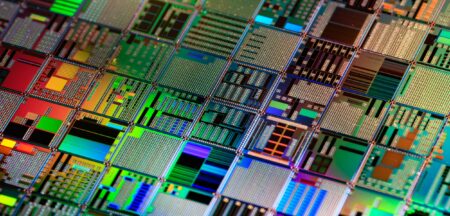
Huawei Technologies’ earnings grew at their slowest pace in five years, as China’s biggest maker of telecommunications gear sank money into research and a marketing blitz to gain ground on Apple and Samsung in smartphones.
Huawei, founded by former army engineer Ren Zhengfei three decades ago, has emerged as one of China’s most recognisable consumer brands. A relatively new entrant in mobile devices, it’s rapidly grabbed market share from Apple and Samsung Electronics with premium phones and is now ranked third globally. But that expansion comes at a cost, as the company boosts spending to keep up.
Its main business of networking equipment is also slowing as phone carriers rein in network roll-outs and prepare for the advent of faster 5G standards. And smartphone competition at home from the likes of Oppo is intensifying.
Net income inched 0,4% higher to 37,1bn yuan (US$5,4bn) in 2016, the Shenzhen, China-based company said on Friday. That was its slowest pace of growth since a profit decline in 2011. Its net margin dipped to 7,1%, from about 9,3% the previous year. Going forward, that level of profitability is “appropriate”, said Eric Xu, the current rotating chief executive.
Huawei said Friday it spent 14,6% of its 2016 revenue on R&D and will set aside $10-$20bn annually for that purpose as it ramps up research into everything from artificial intelligence and wireless technology to cloud computing.
But it’s also begun keeping a closer eye on the bottom line. Xu pledged in December to cut extravagant marketing events and warned against “blind optimism and rhetoric”. Mounting expenses would damage efficiency and profitability, he said in a memo to staff.
“We’re paying more attention to efficiency and scaling back on investments that cannot bring value,” Xu, who under the current rotation will cede the helm on Friday, told reporters after releasing its annual report in Shenzhen.
The company blamed a rapidly expanding consumer business for weighing on margins. Revenue grew 32% to 521,6bn yuan, said Huawei, a closely held company that discloses only basic finances. That was a tad ahead of its own expectations. But the consumer division outstripped that pace, growing revenue 44% to 179,8bn yuan by shipping 139m smartphones in 2016.
Huawei has become less dependent on its traditional networking business as the company attempts to grow sales from cloud computing and smartphones. About 56% of its sales came from the telecoms-carrier business last year, down from about 60% in 2015 and about two-thirds in 2014, according to previous reports.
It’s declared its intention of becoming the world’s largest smartphone player within half a decade and Huawei is said to be aiming for $33bn in 2017 revenue for its consumer electronics business, which include smartphones, tablets and wearables.
But that business is under assault at home. It lost its top position in China’s smartphone market last year to Oppo, which attacked rural areas and lower-tier cities. And Vivo ranked just behind Huawei domestically in the December quarter, according to International Data Corp.
While Huawei has voiced ambitions to expand abroad, it remains heavily reliant on its home market. China contributed 45% or 236,5bn yuan of revenue last year compared to 42% in 2015. A little over half of its smartphones were shipped within the domestic market in the quarter ended December, according to data from IDC.
Deputy chairman Guo Ping will now become CEO after Xu’s six-month tenure ends Friday. Guo, 51, started as a project manager at Huawei nearly 30 years ago and once headed the smartphone business.
Huawei employs a unique rotating-CEO mechanism after Ren excused himself from daily operations more than five years ago. Ken Hu, who used to lead information security and US businesses, is the other executive in the rotation. He’s expected to take up the role after Guo’s term ends around September. — (c) 2017 Bloomberg LP




